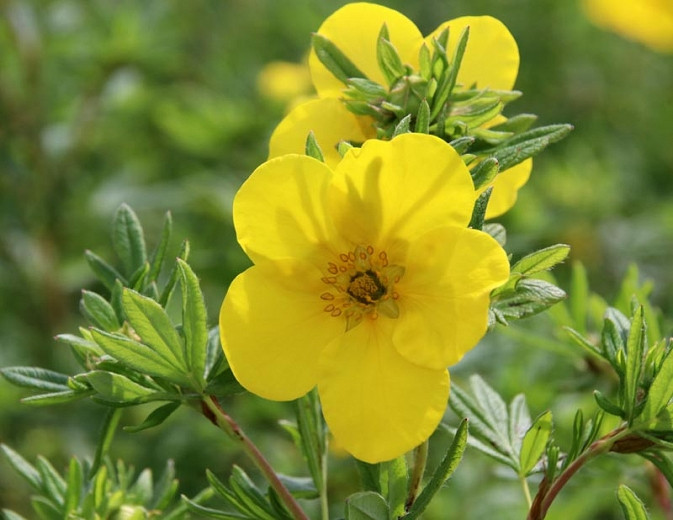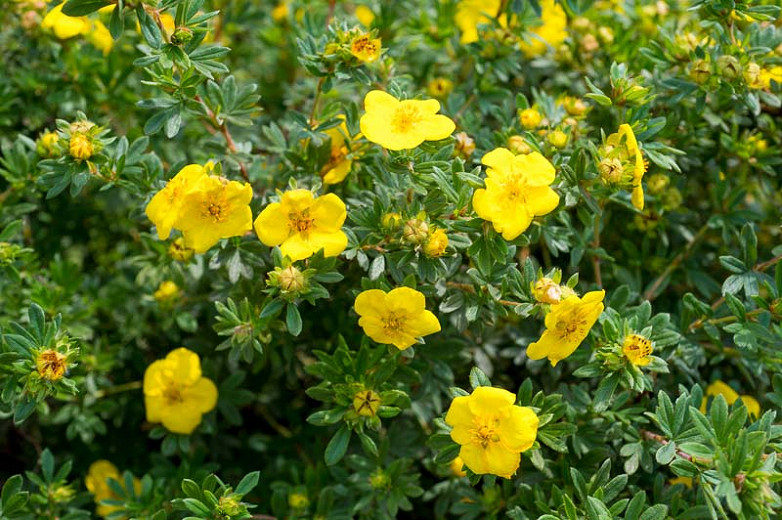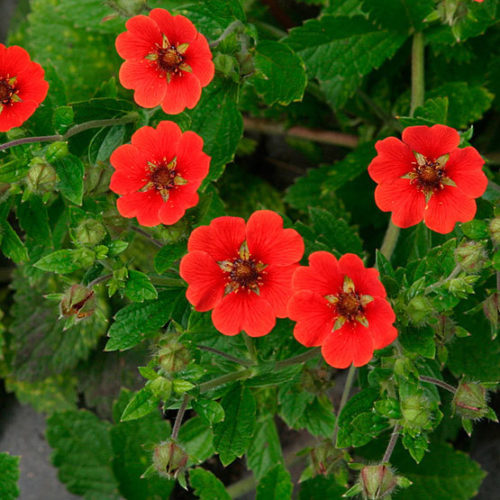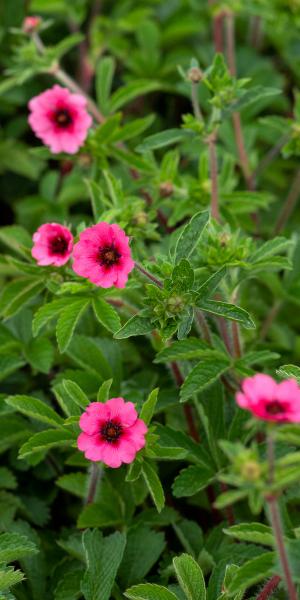The Potentilla: A Versatile Flower For Any Garden
The Potentilla: A Versatile Flower for Any Garden
Potentilla, also known as shrubby cinquefoil, is a hardy and versatile flowering shrub that can be grown in a wide range of conditions. It is known for its long blooming period, which can last from early summer to late fall. Potentillas come in a variety of colors, including yellow, pink, orange, red, and white. They can be used in a variety of garden settings, including flower beds, borders, rock gardens, and containers.
Here are some of the reasons why potentilla is a great choice for any garden:
- Easy to grow: Potentillas are relatively easy to grow and care for. They are drought-tolerant and can withstand a wide range of pH levels.
- Long blooming period: Potentillas bloom for a long period of time, from early summer to late fall. This makes them a great choice for adding color to your garden throughout the season.
- Versatile: Potentillas can be used in a variety of garden settings. They can be grown in flower beds, borders, rock gardens, and containers.
- Attract butterflies and other pollinators: The flowers of potentillas are attractive to butterflies and other pollinators. This makes them a great choice for gardens that are designed to attract wildlife.
Here are some tips for growing potentillas:
- Choose a location that receives full sun to partial shade. Potentillas can tolerate full sun, but they will bloom for a longer period of time in partial shade.
- Plant potentillas in well-drained soil. They are not tolerant of wet, soggy soil.
- Fertilize potentillas once a year in the spring with a balanced fertilizer.
- Deadhead spent flowers to encourage more blooms.
- Prune potentillas in the spring to remove any dead or damaged growth.
Potentillas are a low-maintenance and versatile flowering shrub that can add color and interest to any garden. With a little care, they can thrive in a variety of conditions and provide years of enjoyment.
Potentilla is a genus of flowering plants that includes over 300 species. It is also known as cinquefoil, five fingers, silverweed, tormentil, and barren strawberry. Potentillas are found in a variety of habitats, including meadows, forests, and roadsides. They can be annual, biennial, or perennial plants.
Potentillas are known for their small, daisy-like flowers. The flowers can be yellow, pink, white, or red. The leaves of potentillas are also distinctive. They are usually compound leaves, meaning that they are made up of several smaller leaflets.
Potentillas are not only beautiful plants, but they also have a number of medicinal properties. The leaves and flowers of potentillas have been used to treat a variety of ailments, including stomach upset, inflammation, and diarrhea.
If you are interested in learning more about potentilla, I recommend visiting Garden Wiki. This website provides a wealth of information about the genus, including its history, taxonomy, and medicinal properties. You can also find photos and illustrations of potentillas from around the world.
FAQ of potentilla
- What is potentilla?
Potentilla is a genus of flowering plants in the rose family, Rosaceae. There are over 500 species of potentilla, found in temperate and arctic regions around the world. Potentillas are typically small, herbaceous plants, but some species can grow into shrubs or trees. They have compound leaves with three to seven leaflets, and small, yellow, white, or pink flowers.
- What are the special features of potentilla?
Potentillas are known for their hardiness and adaptability. They can tolerate a wide range of soil conditions and are resistant to drought and pests. They are also deer-resistant, making them a good choice for gardens in areas with deer populations.
- What are the different types of potentilla?
The most common type of potentilla is the cinquefoil. Cinquefoils have five-petaled flowers and are typically found in North America and Europe. Other types of potentilla include:
* Shrubby cinquefoil: This type of potentilla grows into a shrub and can reach heights of up to 6 feet. It has yellow flowers and is native to Europe and Asia.
* Silverweed: This type of potentilla has white flowers and is native to North America and Europe. It is a spreading plant that can be invasive in some areas.
* Barren strawberry: This type of potentilla has white flowers and red berries. It is native to North America and is often used as a groundcover plant.
- What are the uses of potentilla?
Potentillas have a variety of uses. They are often used as ornamental plants in gardens and landscaping. Some species of potentilla are also edible, and the leaves and flowers can be used to make tea or salads. Potentillas also have some medicinal properties. The leaves and flowers of some species can be used to treat a variety of ailments, including wound healing, diarrhea, and inflammation.
- How to care for potentilla?
Potentillas are relatively easy to care for. They prefer full sun or partial shade and well-drained soil. They are drought-tolerant and do not need to be watered often. Potentillas can be propagated by seed, division, or cuttings.
Image of potentilla
- Potentilla Goldfinger: This perennial plant has bright yellow flowers and fern-like foliage. It is hardy in zones 3-8 and blooms in late spring to early summer.

- Potentilla fruticosa: This shrubby plant has pink, white, or red flowers and can grow up to 3 feet tall. It is hardy in zones 2-8 and blooms in late spring to early summer.

- Potentilla nepalensis: This perennial plant has white flowers with yellow centers and fern-like foliage. It is hardy in zones 4-8 and blooms in late spring to early summer.

- Potentilla 'Gibson's Scarlet: This perennial plant has bright scarlet flowers and fern-like foliage. It is hardy in zones 3-8 and blooms in late spring to early summer.

- Potentilla 'Miss Willmott's Ghost': This perennial plant has white flowers with pink edges and fern-like foliage. It is hardy in zones 3-8 and blooms in late spring to early summer.

Post a Comment for "The Potentilla: A Versatile Flower For Any Garden"